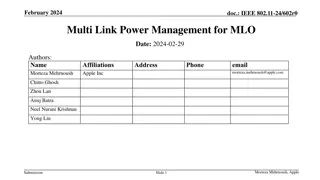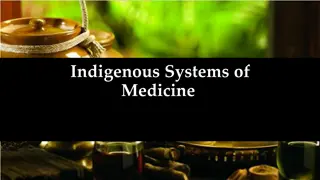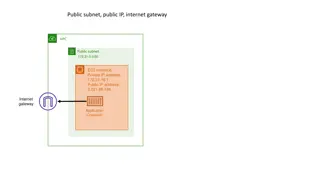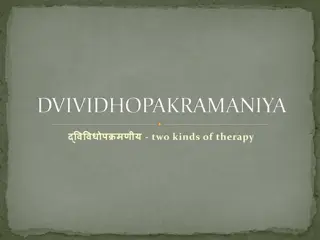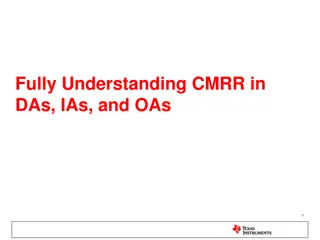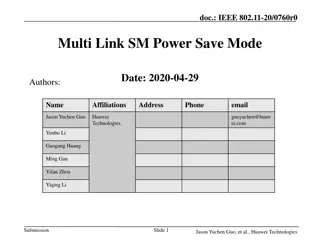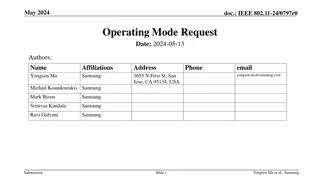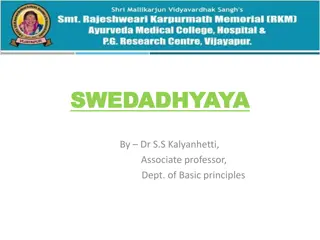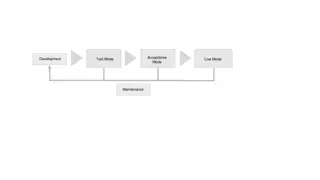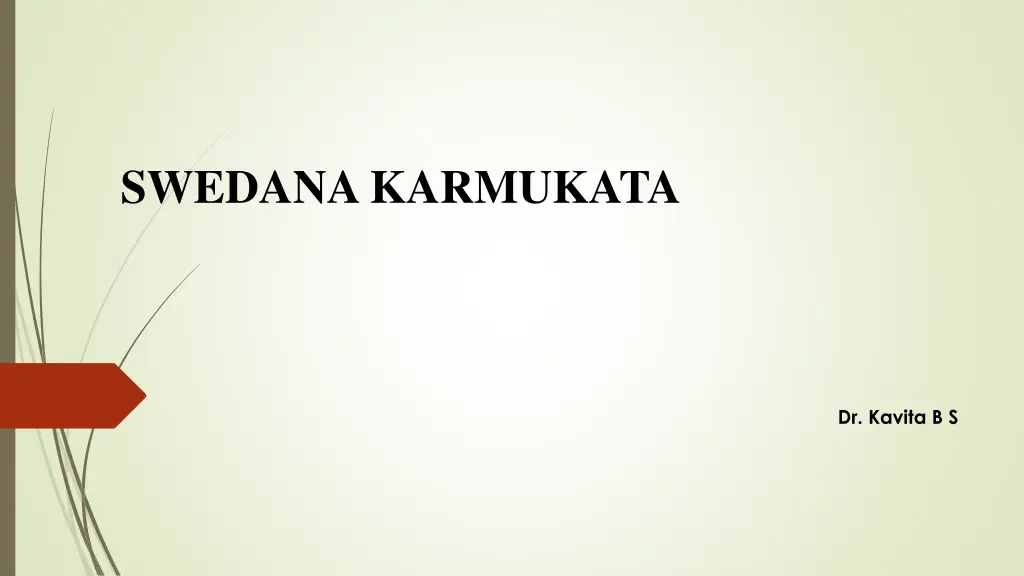
Swedana: Types, Benefits & Clinical Applications
Discover the different types of Swedana therapy, its benefits, and clinical applications. Learn about the process of inducing sweating in patients and its effects on the body. Explore the various methods and types of Swedana, including Tapa Sweda, Upanaha Sweda, Ushma Sweda, and Drava Sweda. Dive into the detailed descriptions and probable modes of action of this ancient Ayurvedic therapy.
Download Presentation

Please find below an Image/Link to download the presentation.
The content on the website is provided AS IS for your information and personal use only. It may not be sold, licensed, or shared on other websites without obtaining consent from the author. If you encounter any issues during the download, it is possible that the publisher has removed the file from their server.
You are allowed to download the files provided on this website for personal or commercial use, subject to the condition that they are used lawfully. All files are the property of their respective owners.
The content on the website is provided AS IS for your information and personal use only. It may not be sold, licensed, or shared on other websites without obtaining consent from the author.
E N D
Presentation Transcript
SWEDANA KARMUKATA Dr. Kavita B S
Swedana Definition : Cha. Su. 22/11 Samanya Guna: : Su. Chi. 32/22
Definition of swedana Swedana is a process to induce sweating artificially in a patient after snehana Swedana means heat applied by various methods at a diseased conditions or entire body Heat an be applied directly or in-directly Also applied dry or moist, with or without instruments Poorva karma for major therapies
Types of sweda ; - , , , ; || || Four types of sweda 1. TAPA SWEDA(using solids) 2. UPANAHA SWEDA (using pastes-semi solids) 3. USHMA SWEDA (air, vapour) - 4. DRAVA SWEDA(liquids)
Types of Swedana Dwividha Sweda: Trividha Sweda: Chaturvidha Sweda Saptavidha Sweda Ashtavidha Sweda Sagni Niragni Mahana Tapa Loshta Hasta Ekangagata - Sarvangagata Madhyama Ushma Bashpa Pradeha Snigdha Ruksha Mridu Upanaha Agnijwala Nadi Drava Ghati Prastara Jala Sankara Phala Upanaha Baluka Avagaha Parisheka
Clinical application Snigdha Snigdha Ruksha Ruksha Valuka pinda sweda Mamsa pinda sweda Patra pinda sweda Tusha pinda sweda Masha pinda sweda Jambeera pinda sweda Karisha pinda sweda Shashtika shali pinda sweda Choorna pinda sweda Chincha lavana pinda sweda Karpasabeeja pinda Godhuma pinda sweda sweda
Probable mode of action *Ushna,Tikshna guna- vata and kapha shamana *Ushna guna- allivates sheetata Sweda Vata Kapha Vata kapha Meda and kleda - Vyana vata - Shleshmaka - Apana vata Stroto abhiviliyate Cha.chi 17/71-70 GRATHITA KAPHA VARGIYA DOSHAS
Temperature 2-3 C increase in body temperature Cutaneuos stimulation ------ Thermo receptors Stimulation signals to spinal dorsal root ganglia 2m/sec nerve conduction velocity increases by 1 C increase in body temperature Inhibition of sympathetic adrenergic activation Relaxation of smooth muscles of the vessels Vasodilatation
Temperature Cutaneous stimulation ------ Thermo receptors sympathetic activation Epinephrin, Non epinephrine, cortisol and thyronorm Hormones released Accelerates metabolic rate Stimulates lipolysis
Swedana Vasodilatation Induction of sweating Hypothalamic activation of Sympathetic nerves Sweat glands activation 1 of increased body temperature --- 10 times / folds increases sweating Sweat hastens Detoxification through sweat
SWEDANA Vasodilatation Muscle relaxation Reduction of nerve irritation STHAMBATA Acceleration of sweating Lipolysis GAURAVATA Increased blood circulation Increased metabolic rate SHEETATA
Function of swedana Sthambhagna Stiffness is removed Commonly addressed Cramps, muscle stiffness Grudrasi, manyasthamba Gouravahara Heaviness is relieved Kapha dominant Obesity, circulatory collapse, pakshaghata etc Sheetaghna Coldness is reduced All cold intolerance diseases Hypothyroidism, Hypopitutarisum etc Swedana Induces perspiration Kampavata, Diabetes, Hypothyroidism etc
CONCLUSION Swedana is one of the important treatment modality which is useful in the treatment of diseases in the form of Poorvakarma, Pradhana karma as well as Paschata karma. The Dravyas (substances) mentioned for Swedana each of them has different properties and actions, it should be used depending on condition. There are many Dravya mentioned by Acharya one should select them depending upon Desha, Roga, and availability of Dravya.

